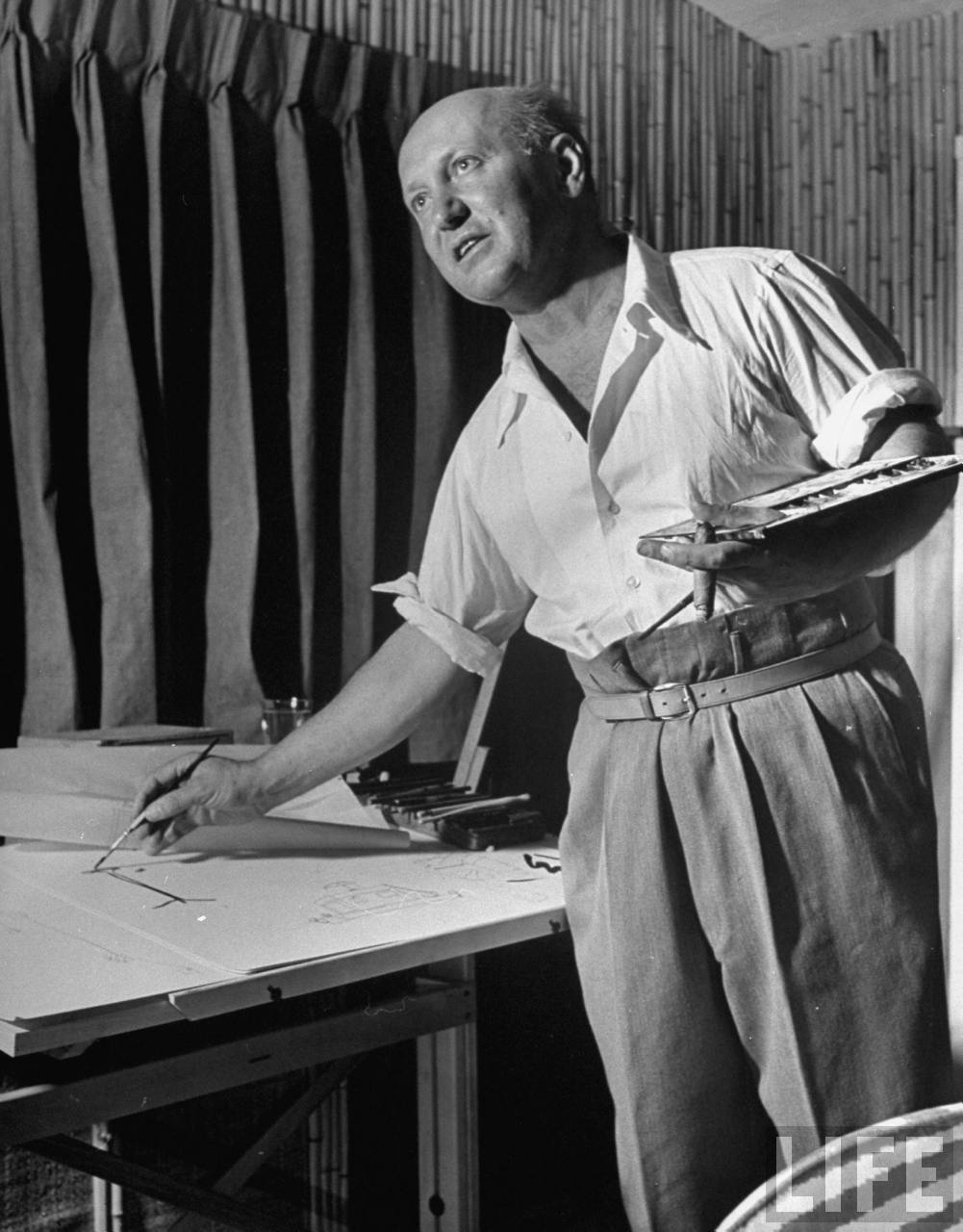LUDWIG BEMELMANS
1898-1962 Throughout his life, Ludwig Bemelmans saw himself, first and foremost, as a painter, despite his considerable success at writing for both children and adults. He wrote short stories, novels, articles, essays, poetry, and reminiscences of all sorts, and he always wrote about what he saw— usually with great wit, charm, and honesty. He was forty-one years old when Madeline was published in 1939, but everything in the book was drawn from a child’s point of view—the enormously tall and energetic teacher Miss Clavel, the twelve identically shaped little girls, the color, splash, and joy of the streets of Paris. Best of all was the simplicity and directness of his line.
Throughout his life, Ludwig Bemelmans saw himself, first and foremost, as a painter, despite his considerable success at writing for both children and adults. He wrote short stories, novels, articles, essays, poetry, and reminiscences of all sorts, and he always wrote about what he saw— usually with great wit, charm, and honesty. He was forty-one years old when Madeline was published in 1939, but everything in the book was drawn from a child’s point of view—the enormously tall and energetic teacher Miss Clavel, the twelve identically shaped little girls, the color, splash, and joy of the streets of Paris. Best of all was the simplicity and directness of his line.
Ludwig Bemelmans emigrated to the United States from Germany in 1914, when he was sixteen. He had been raised in the Austrian Tyrols and in Bavaria and learned to speak Wench and later German. During his early childhood he lived in a hotel his father owned and managed, and later, in New York, he worked his way up in the hotel business to support himself. On the side he pursued what gave him the greatest pleasure—painting and drawing.
Ludwig Bemelmans’s first children’s book, Hansi (1934), recounts a young boy’s visit to his uncle’s mountain home in the Austrian Tyrols; The High World (1954) is also an adventure set where Bemelmans grew up. These long storybooks, with half-page illustrations throughout, were similar in format to The Golden Basket, which was a Newbery Honor Book in 1937. In this story, two girls tour Bruges with their father, encountering one day twelve little girls out for a walk, one of whom is called Madeline. Bemelmans was an inveterate traveler, and it was a visit to Belgium with his wife, Madeline Freund, that inspired The Golden Basket.
His great success as an artist is that he conveys much childlike joy, energy, and spontaneity in his work. Madeline (1938), a Caldecott Honor Book, was followed by five other stories in a similar large, spacious format about the fearless little girl who always stepped out of line and found her way to adventure. Madeline’s Rescue (1953) won the Caldecott Medal in 1954, and after that came Madeline’s Christmas in Texas (1955), Madeline and the Bad Hat (1956), Madeline and the Gypsies (1959), and Madeline in London (1961). Of all Bemelmans’s books for children, these are the ones that have stayed in print and won the loyally of countless readers.
The original inspiration for Madeline was the convent where Bemelmans’s mother was educated as a child, along with the author’s own experience in boarding school, where he walked with his classmates in two straight lines. The story itself grew in Bemelmans’s imagination as he recuperated from a biking accident in France; a little girl in the same rural hospital had just had her appendix out. The text for Madeline is brief, written in rhyming couplets, and the memorable opening lines are found in other “Madeline” books: “In an old house in Paris I that was covered with vines / lived twelve little girls in two straight lines.”
Ludwig Bemelmans wrote more than fifteen children’s books and more than twenty for adults, including anecdotal collections about his years in the hotel business, diaries of his World War I experience in the U.S. Army, and, later, writings about Paris, which he loved, and which became his second home. When Bemelmans was becoming established as a painter in New York, his work was exhibited and sold in galleries, and he found the public role of a gallery artist very unpleasant. But eventually he discovered a way to maintain his privacy and still have a wide audience for his work.
LUDWIG BEMELMANS
Artworks for Sale
 LUDWIG BEMELMANS
LUDWIG BEMELMANSPortrait in Yellow: Ville D’Avray (Woman with Green Glove)
Oil
22 x 18 inches; Framed: 30 1/2 x 27 inches
Click here for more information
